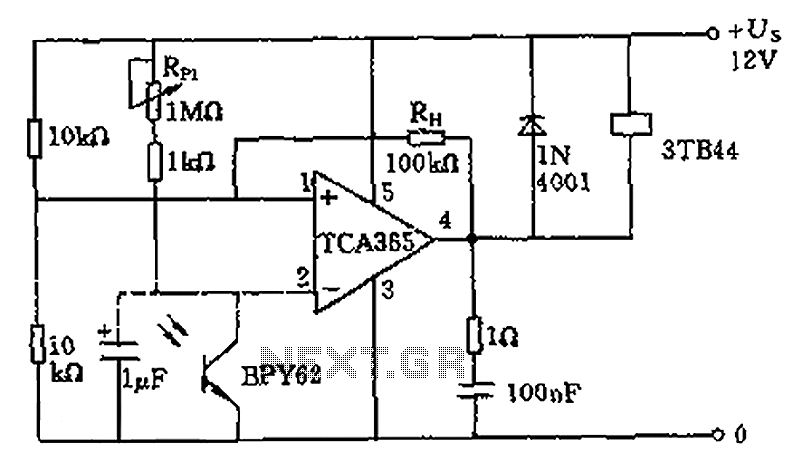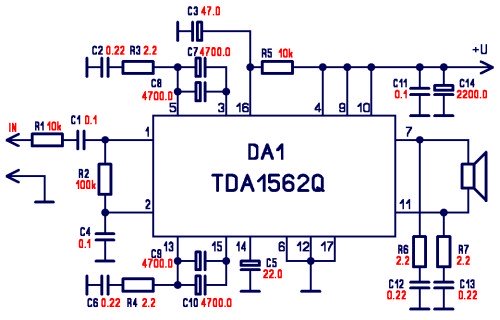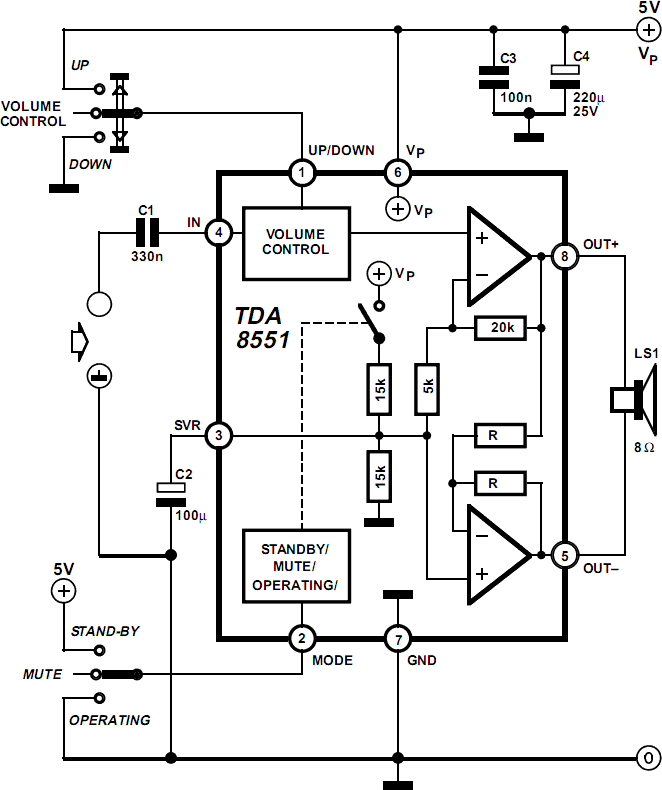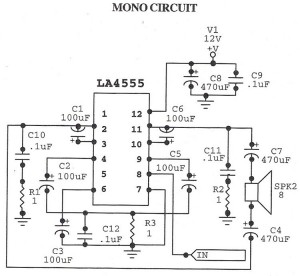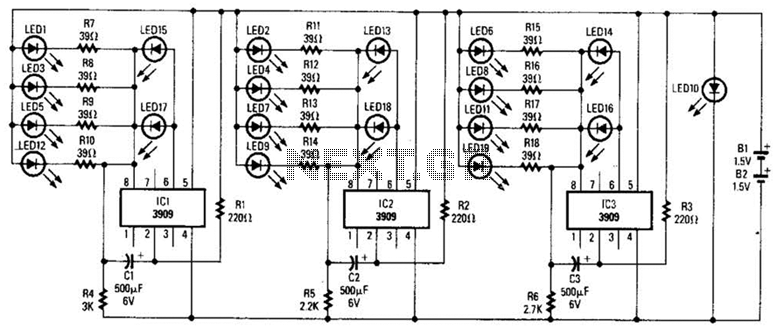
Audio Light Modulator

Audio Light Modulator. Audio light modulation enhances the enjoyment of music during events held at home or outdoors. Presented here is a straightforward circuit for this purpose.
The audio light modulator circuit is designed to synchronize light effects with audio signals, creating a dynamic visual experience that complements music playback. This circuit typically utilizes a microphone or audio input to detect sound levels, which are then processed to control the brightness and color of connected lights, such as LEDs or incandescent bulbs.
The essential components of this circuit include a microphone or audio input stage, an amplifier, a rectifier, and a light control output. The microphone captures ambient sound, converting it into an electrical signal. This signal is then amplified to ensure that it is strong enough for further processing. The rectifier converts the AC signal from the audio source into a DC signal, which is necessary for controlling the light output.
A key feature of the audio light modulator is the use of a transistor or a triac, which acts as a switch to control the power delivered to the light source. By adjusting the duty cycle based on the audio signal's amplitude, the circuit can vary the light intensity in real-time, creating a pulsing effect that corresponds to the rhythm and dynamics of the music.
In summary, the audio light modulator circuit provides an engaging way to enhance musical experiences by integrating visual elements. Its simplicity makes it accessible for hobbyists and can be easily adapted for various applications, including parties, concerts, and home entertainment systems.Audio Light Modulator. Audio light modulations add to the enjoyment of music during functions organised at home or outdoors. Presented here is one such simple circuit in which. 🔗 External reference
The audio light modulator circuit is designed to synchronize light effects with audio signals, creating a dynamic visual experience that complements music playback. This circuit typically utilizes a microphone or audio input to detect sound levels, which are then processed to control the brightness and color of connected lights, such as LEDs or incandescent bulbs.
The essential components of this circuit include a microphone or audio input stage, an amplifier, a rectifier, and a light control output. The microphone captures ambient sound, converting it into an electrical signal. This signal is then amplified to ensure that it is strong enough for further processing. The rectifier converts the AC signal from the audio source into a DC signal, which is necessary for controlling the light output.
A key feature of the audio light modulator is the use of a transistor or a triac, which acts as a switch to control the power delivered to the light source. By adjusting the duty cycle based on the audio signal's amplitude, the circuit can vary the light intensity in real-time, creating a pulsing effect that corresponds to the rhythm and dynamics of the music.
In summary, the audio light modulator circuit provides an engaging way to enhance musical experiences by integrating visual elements. Its simplicity makes it accessible for hobbyists and can be easily adapted for various applications, including parties, concerts, and home entertainment systems.Audio Light Modulator. Audio light modulations add to the enjoyment of music during functions organised at home or outdoors. Presented here is one such simple circuit in which. 🔗 External reference
